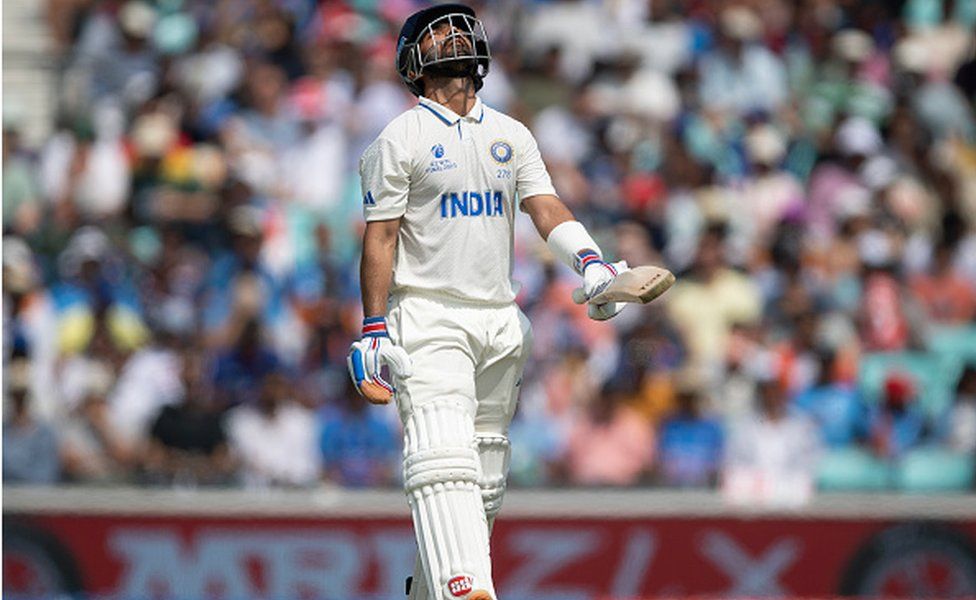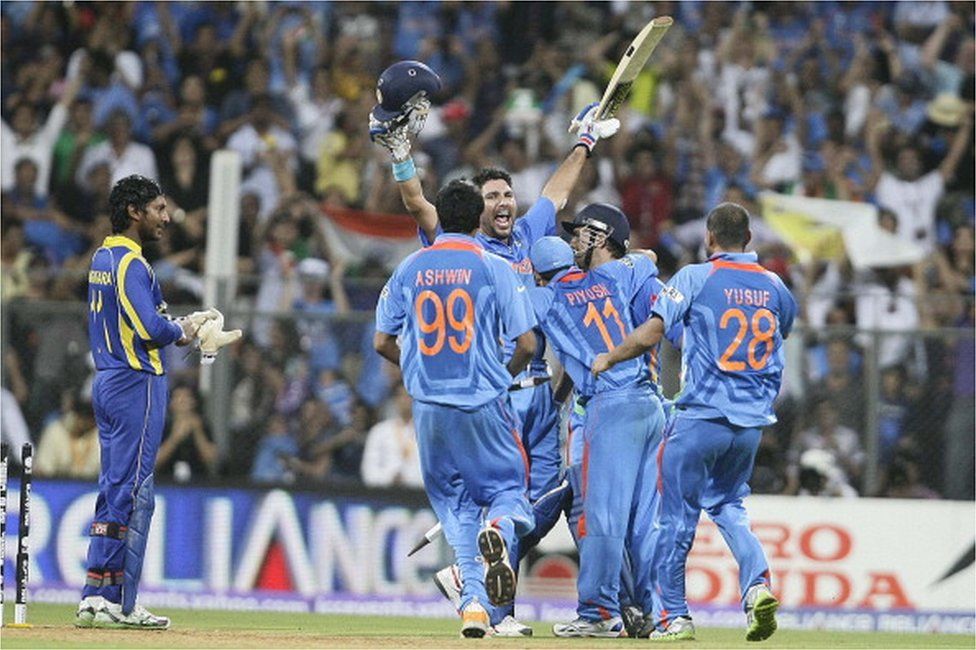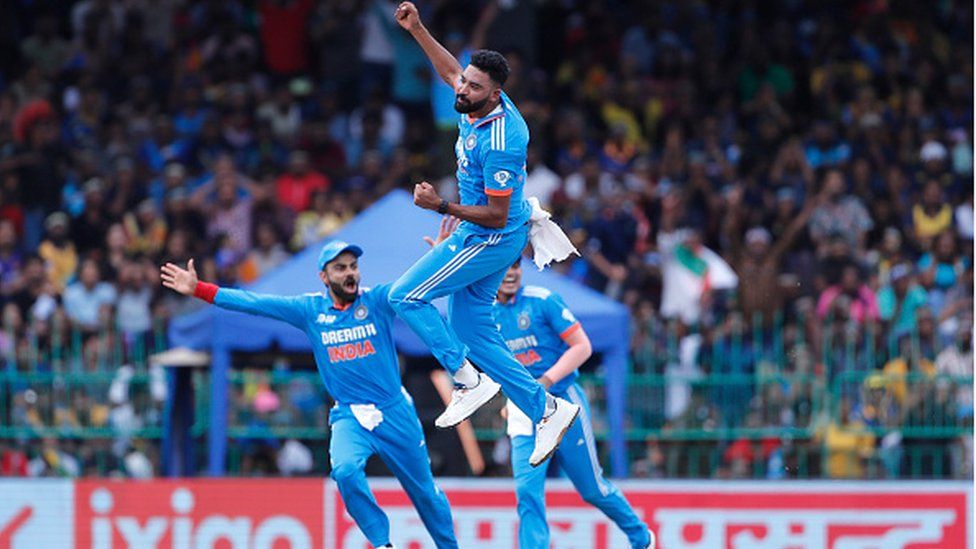India start firm favourites in the upcoming Cricket World Cup but with the tag of “chokers” dangling ominously overhead.
This derisive term was widely used to describe hugely talented South African cricket teams between 1995 and 2015 because they would consistently trip at the last hurdle and failed to win any trophy of consequence. It has since migrated to the Indian cricket team, who have flopped badly in all major multi-nation International Cricket Council (ICC) tournaments after winning the 2013 Champions Trophy.
Two years earlier, India had won the one-day World Cup and four years before that, in MS Dhoni’s maiden assignment as captain, an India team without big stars clinched the inaugural T20 World Cup.
This hat-trick of triumphs made Dhoni into a cult figure and also highlighted the wealth and depth of cricket talent in India.
With the Indian Premier League growing exponentially – in popularity and profitability – from its beginnings in 2008 and players emerging from every nook and corner of the country, India’s march upwards in the global order of cricket looked unstoppable.
In many ways, that has indeed been the case.

India today is not just the most powerful cricketing nation, bringing in almost 70% of “eyeballs”, which translates into roughly 70% of global revenue, but also been the world’s best performing side, for long periods topping the ICC rankings across formats.
Heading into the 2023 World Cup, India are again one of the top teams in Tests, one-day internationals and T20 matches.
The Indian cricket system, despite all of its shortcomings, has been successful in providing top-class facilities, creating opportunities for competitive matches and substantial financial rewards for players at every age group.
India now has the largest talent pool in the world and intense competition between players for a place in the India team has consistently driven up performance levels.
But while all this has made Indian cricket formidable, an inability to win multi-team tournaments for so long is frustrating for fans. Ironically, in almost all ICC tournaments – across formats – since 2013, India started favourites, only to flop in the knockout stages or the final.
What explains this distressing trend?

Is it bad selection policy, ill-conceived planning, too many changes of captains and coaches, faulty workload management of players, or just plain bad luck?
All these will have contributed – in some way – in how the team has performed. But since India reached the knockout stage in most tournaments, it would be fair to say that the nub of the problem lies elsewhere.
Winning major cricket tournaments is not just a function of rich talent, but a case of how quickly players adjust to different pitches and conditions, how astutely the team management prepares for different opponents and most significantly, how players, individually and collectively, cope with adversity on and off the field.
To put the last point more bluntly: How good is the Indian team under pressure?
With 1.4 billion fans expecting nothing less than victory in each match, it is a pressure that can make the best players jelly-kneed, drop their focus, or as seems the more likely, lose nerve in crunch situations.
Ravi Shastri, former India captain and chief coach, says that unlike in individual sports, where the onus is on the player themselves to tackle pressure, this syndrome gets more complex in team games, where every player has to do their bit to near perfection to make a collective winning thrust, or for some players to make up (swiftly) for those who are having a poor day.

“Even a brief spell of poor play, one bad selection can cause a disaster,” he says.
A spell of poor play cost India in the 2019 World Cup semi-final against New Zealand, when three wickets – including those of Rohit Sharma and Virat Kohli – were lost in the first few overs.
And the dropping of Ravichandran Ashwin, the number one ranked ICC Test bowler, for the World Test Championship final against Australia, lost by 209 runs, was widely seen as a poor selection decision.
“They [the players] have to have their wits about them, be strong of gut, and mentally ruthless. At this level, even a minor slip-up, a brief lapse in concentration, and the opposing team can finish you off,” says Shastri.
So do India have the wherewithal to win this time?
In terms of talent, experience and balance in the team, certainly. But before the Asia Cup, India looked an unsettled side, with questions to answer.
Would Jasprit Bumrah, KL Rahul and Shreyas Iyer – returning from long-injury layoffs, be fully fit and in form? Was recalling Kuldep Yadav from the wilderness a wild punt or well-calculated selection since the team already had two other left-arm spinners in Ravindra Jadeja and Axar Patel? Would making the wicketkeeper’s slot a toss-up between Rahul and Ishan Kishan create needless pressure on both?
But such concerns were allayed as India stormed to the title.
Playing at home is a big advantage too, with the past three World Cups being won by a host nation – but it is no guarantee of success. Australia couldn’t even even make it to the knockout stage in 1992. In both 1987 and 1996, playing at home, India were knocked out in the semi-final.
All told, there is no template or simple formula to turn a bunch of players into a winning unit. Ability is crucial, but so too are selection, chemistry between the players, inspiration, ambition and the calmness to be able to absorb extreme pressure.
The cricket world will be watching on with fascination to see how India respond to the myriad challenges facing them in the next seven to eight weeks. Will they be champions or chokers this time?
Source: BBC




